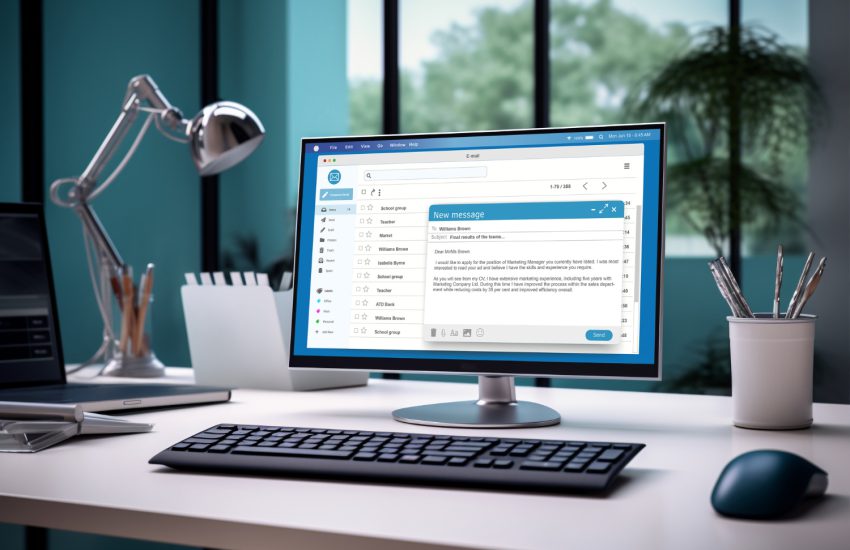Summary: Advanced email engagement metrics such as reply rates, forward rates, and interaction with content significantly impact email deliverability. Optimising these metrics can boost inbox placement and enhance your email marketing performance. Read on to understand how these metrics work and how you can improve them.
Email marketing success goes beyond just tracking opens and clicks. As email marketers, we focus on improving our email engagement rates to build better connections with subscribers. However, advanced email engagement metrics such as reply rates, forward rates, and interaction with content are becoming just as critical in determining whether your emails end up in the inbox—or the dreaded spam folder.
In this post, we will dive deep into advanced email engagement metrics and how they affect deliverability. You’ll learn how to optimise engagement to improve inbox placement and the tools that can help you monitor and refine your strategies.

Understanding Advanced Email Engagement Metrics
When it comes to email marketing, understanding advanced engagement metrics is key to improving your email deliverability. While open and click-through rates are the most commonly tracked, they don’t tell the whole story. Let’s explore some additional metrics that offer more profound insights.
1. Reply Rates
The reply rate refers to how often recipients respond to your email. It’s a powerful metric because it signals high engagement and relevance. Email providers like Gmail and Outlook interpret high reply rates as a sign of meaningful communication. This engagement boosts your sender’s reputation, increasing the likelihood that your emails will land in the inbox.
Tip: Encourage replies by asking open-ended questions or including calls to action (CTAs) that invite responses.
2. Forward Rates
The forward rate measures how often recipients share your emails with others. This is an important metric, as it signals that your content is valuable and worth sharing. A high forward rate indicates that subscribers trust your content and are engaging with it in a way that reflects positively on your sender reputation.
Tip: Include “share” or “forward to a friend” buttons in your emails to make it easy for readers to pass along your message.
3. Interaction with Content
Interaction with content refers to how recipients engage with the actual content inside your email. This can include actions like watching videos, clicking images, or scrolling through the email. The more interaction you have, the better it signals to ISPs (Internet Service Providers) that your emails are being read and appreciated.
Tip: Create engaging and interactive content such as surveys, polls, and video links to encourage more recipient interaction.
4. List Growth Rate
This metric tracks how quickly your email list grows over time. A steady and healthy list growth rate indicates that your emails are reaching the right people and generating enough interest. A stagnant or shrinking list, on the other hand, may signal poor engagement or list quality, negatively impacting deliverability.
Tip: Promote sign-ups on your website and social media channels to grow your list organically.
5. Unsubscribe and Spam Complaint Rates
While not necessarily a “positive” metric, keeping an eye on unsubscribe and spam complaint rates is crucial. A high rate of unsubscribes or spam complaints is an indicator that your content is not resonating with your audience, which can lead to your emails being filtered into spam folders in the future.
Tip: Offer clear options for subscribers to manage preferences and avoid bombarding them with irrelevant content.
How These Metrics Directly Affect Deliverability
Email engagement metrics directly influence your email deliverability because they are closely monitored by Internet Service Providers (ISPs) and email clients. These platforms use engagement rates as an indicator of your reputation as a sender. Poor engagement or lack of interaction can result in your emails being flagged as spam or blocked entirely.
1. Sender Reputation
Your sender reputation is primarily built on the engagement metrics discussed above. High engagement signals to ISPs that your emails are well-received and wanted by recipients. This improves your reputation and increases the chances of your emails reaching the inbox. On the other hand, low engagement or high complaint rates can damage your sender’s reputation and lead to deliverability issues.
2. Engagement Thresholds
Each ISP has engagement thresholds that determine whether an email will land in the inbox or the spam folder. These thresholds are based on metrics like open rates, reply rates, and click-through rates. If you consistently meet or exceed these thresholds, your emails are more likely to reach the inbox. If you fall short, your emails may be blocked or filtered into spam.
3. Spam Filters
Spam filters analyse user engagement patterns to detect potential spam. If your email list contains inactive or disengaged subscribers, your emails are more likely to be flagged as spam. Maintaining a healthy list with engaged users is crucial to avoiding spam filters.

How to Optimise Engagement to Improve Inbox Placement
Improving your email engagement metrics is not just about tracking numbers; it’s about taking action to boost those metrics. Here are several strategies you can use to optimise engagement and improve inbox placement:
1. Segment Your Email List
Segmentation allows you to send more relevant content to specific groups of subscribers. This increases the chances of engagement because your emails are tailored to the interests of each segment. By sending targeted emails, you improve both open rates and interaction rates, which ultimately boosts deliverability.
Tip: Segment by demographics, purchase history, or past engagement levels to send the most relevant emails.
2. Clean Your Email List Regularly
A clean email list is essential for high engagement. Remove inactive subscribers and avoid sending emails to invalid addresses. A high bounce rate can severely affect your sender’s reputation and deliverability.
Tip: Use email verification tools like MyEmailVerifier to validate your email list and ensure you’re sending to real, active subscribers.
3. Personalise Your Emails
Personalised emails tend to have higher engagement rates. Use the recipient’s name and tailor the content based on their preferences and past behaviours. Personalisation increases the chances of your email being opened, read, and acted upon.
Tip: Leverage dynamic content to display different offers or messages based on the recipient’s history with your brand.
4. Optimise for Mobile
A significant portion of emails is opened on mobile devices. If your emails aren’t mobile-friendly, your engagement rates will suffer. Ensure your emails are responsive and easy to read on all devices to increase interaction.
Tip: Use mobile-optimised templates and test your emails across different devices before sending.
5. Send at the Right Time
Timing plays a huge role in email engagement. Send your emails when your audience is most likely to be active and engaged. This varies by industry and audience, so experiment with different sending times to find the best approach.
Tip: Use A/B testing to determine the optimal time for sending emails to your subscribers.
Tools and Techniques to Analyze Engagement Data
To effectively monitor and improve your email engagement metrics, you need the right tools and techniques. Here are some tools that can help:
1. Email Marketing Platforms
Most email marketing platforms, such as Mailchimp or Constant Contact, provide built-in analytics to track open rates, click-through rates, and other engagement metrics. These platforms also allow you to segment your list, test different subject lines, and personalise content.
2. MyEmailVerifier – Top Email Verification Tool
For list hygiene and ensuring high deliverability, MyEmailVerifier helps you clean your email list by verifying the validity of email addresses. This ensures that you’re sending to active, real subscribers, which boosts engagement and reduces bounce rates.
3. Google Analytics
You can integrate Google Analytics with your email campaigns to track user behaviour on your website after clicking a link in your email. This provides valuable insights into how engaged recipients are once they leave your email.
4. Heatmap Tools
Heatmap tools, like Hotjar, allow you to see how users interact with the content of your email once they click through to your website. This can help you refine your email content for higher engagement.

FAQ Section
How do reply rates impact email deliverability?
High reply rates show that recipients find your emails relevant and engaging. ISPs interpret this as a positive signal, which boosts your sender’s reputation and improves deliverability.
Why is list segmentation important for email engagement?
Segmentation allows you to send personalised and relevant emails to specific groups, which increases the likelihood of engagement and improves deliverability.
What role does mobile optimisation play in email engagement?
Mobile optimisation ensures that your emails are easy to read and interact with on mobile devices, which increases engagement and helps avoid low deliverability rates.
How can MyEmailVerifier improve my email deliverability?
MyEmailVerifier helps you clean your email list by verifying email addresses, ensuring that you send to valid and active subscribers. This improves engagement and reduces bounce rates, which boosts deliverability.
Conclusion
Advanced email engagement metrics such as reply rates, forward rates, and content interaction are essential for improving your email deliverability. By focusing on these metrics and employing strategies to boost engagement, you can significantly improve your inbox placement and sender reputation. Ready to enhance your email marketing strategy? Try myEmailVerifier’s top email verification service today to optimise your list and ensure better deliverability.

James P. is Digital Marketing Executive at MyEmailVerifier. He is an expert in Content Writing, Inbound marketing, and lead generation. James’s passion for learning about people led her to a career in marketing and social media, with an emphasis on his content creation.
